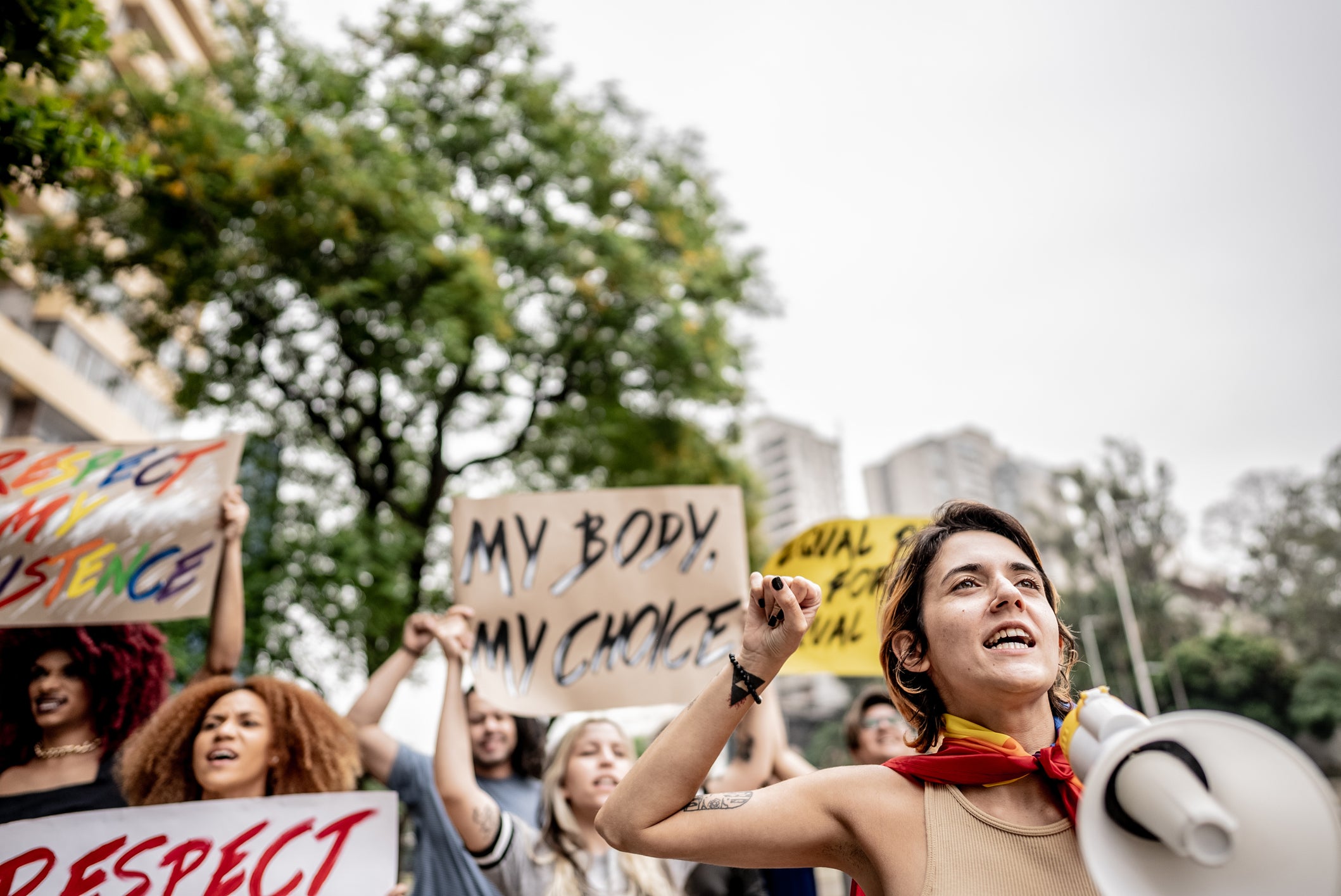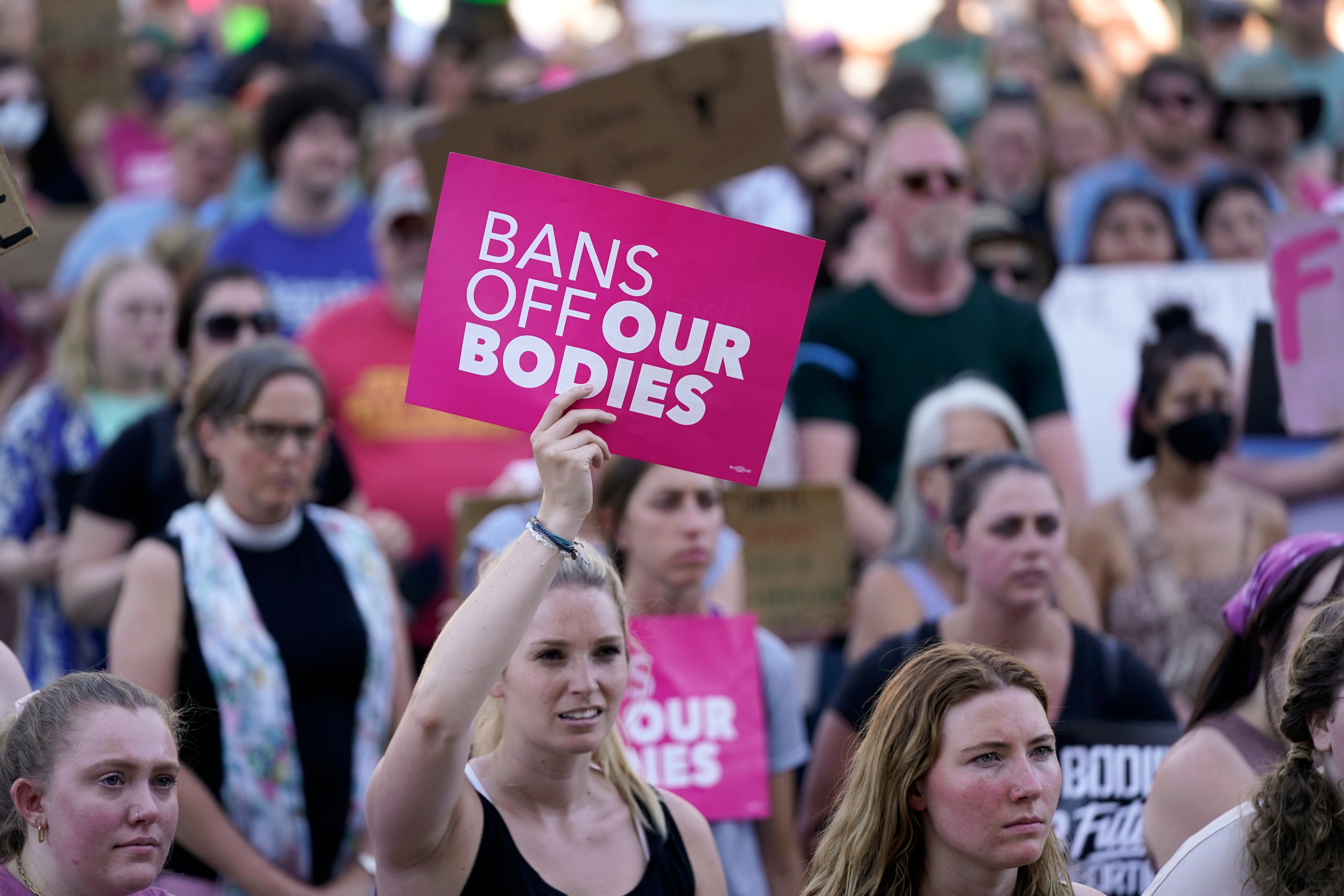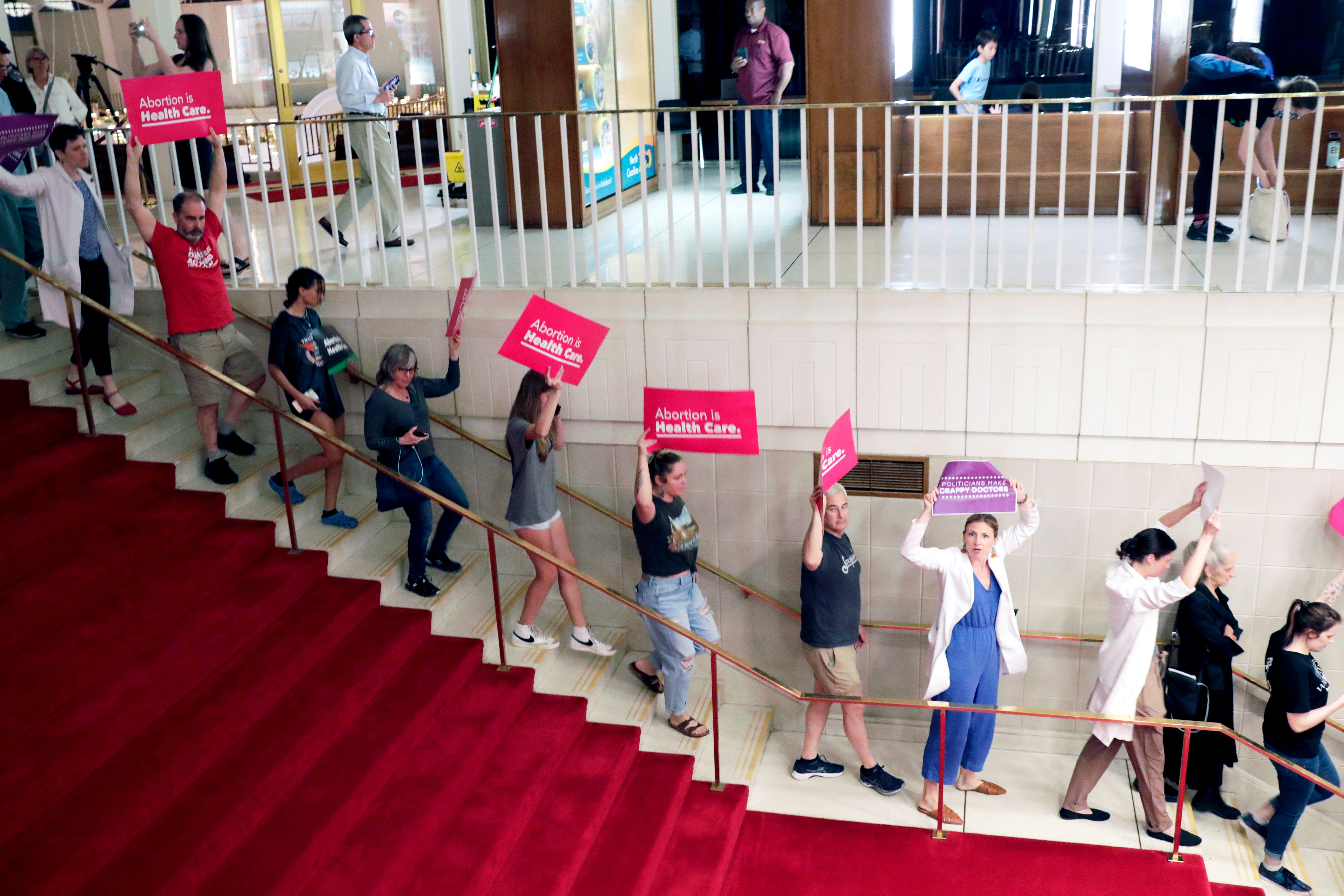This website uses cookies so that we can provide you with the best user experience possible. Cookie information is stored in your browser and performs functions such as recognising you when you return to our website and helping our team to understand which sections of the website you find most interesting and useful.
Support truly
independent journalism
Our mission is to deliver unbiased, fact-based reporting that holds power to account and exposes the truth.
Whether $5 or $50, every contribution counts.
Support us to deliver journalism without an agenda.

Louise Thomas
Editor
On 3 May last year, things were finally looking up for reproductive rights campaigners. After years of relentless pressure from abortion healthcare providers, the government had signed “buffer zones” into law, subsequently making it an offence to influence, obstruct, or harass those seeking terminations within 150 metres of a clinic.
“We were so relieved,” says Nichola Dowell, the clinical services matron at one such clinic, MSI in Camden, London. For years, she has witnessed the distressing impact that anti-abortion campaigners have on patients. “Abortion should be treated as healthcare, and everyone should be able to access it free from harassment.”
Unfortunately, the optimism was short-lived. Now, more than a year after the law was passed, those buffer zones have still not been implemented. And nobody is entirely sure why. “Week after week, women and frontline healthcare workers are forced to face down hostile anti-choice groups on their way into abortion clinics,” says Louise McCudden, head of external affairs at MSI Reproductive Choices, which runs more than 60 abortion clinics across England. “It’s distressing. It’s frightening. And it’s completely preventable.”
Nonetheless, without the implementation of buffer zones, the intimidation outside clinics has only gotten worse. Patients and staff are harangued regularly; there are documented incidents of them being called “murderers” and “baby killers”. Some have been followed home. Others have been blocked while trying to enter clinics.
Most of the behaviour ranges from swearing and heckling to brandishing posters featuring graphic, often doctored, images. Patients are also frequently handed leaflets packed with misinformation. “There’s one section in them that says, hi mummy,” says Michaela McDaid, operations service manager at MSI’s Brixton clinic, where there is almost a daily presence of protesters, even on days that the clinic is closed. One Saturday afternoon last month, there were around 30 people gathered outside.
I witnessed this kind of activity first hand when I reported on it in 2018. The absence of buffer zones was a major problem even then. I visited the MSI clinic in Ealing, which was regularly surrounded by large groups of anti-abortion protesters. On the day I visited, the atmosphere was eerie.
There were around eight people, most of whom appeared to be in their 60s and 70s, lingering metres away from the clinic’s doors. In front of them were doctored photographs of foetuses at different stages of pregnancy. There were signs, too, urging people to “love them both” alongside pictures of parents and babies next to one another. The protesters sang songs and handed out pamphlets with phone numbers for people who claimed to offer help with housing, financial aid – and “moral support”, whatever that means. I can recall just one woman seated there who looked around my age, if not slightly older. It was unnerving. More so because two months before my visit, I’d had an abortion of my own following a sexual assault, which I’ve written about before.
For various reasons, I wound up doing that termination privately, meaning I was spared from encountering any protests like the ones I saw that afternoon. Had I encountered them at that moment, when my body was already in fight-or-flight mode due to the psychological and physical trauma of what had happened to me, I can’t say I would have been able to go through with the abortion.

Not because I would’ve been persuaded by the misinformation spouted by the protesters. But because it would’ve added to the distress of it all, most likely making me want to escape home and isolate myself from everyone, including doctors. Thankfully, none of this happened and I was able to go through with the procedure without coming up against any protesters. Not everyone is so lucky. “Now the anti-choice groups show up every day and the harassment is getting worse,” says Dowell.
A few days after I visited the Ealing clinic, instead of the buffer zones, which were yet to be enforced, the local council decided to create its own Safe Access Zone that would serve the same purpose and prevent anti-choice groups from gathering outside. Earlier this year, Ealing Council renewed the initiative. However, as of yet, there are no signs of a national rollout.
The effect that these protesters have on patients is not to be underestimated. “Women report feeling harassed, alarmed, and distressed by this activity,” says Rachael Clarke, chief of staff at the British Pregnancy Advisory Service, the leading specialists of abortion advice and treatment in the UK. “They often feel they’re being watched and having their privacy infringed on by protesters. And, for some women, the thought of having to walk past these protesters means they delay their appointments or have to call our nurses and midwives for help to get into a clinic.”
The good news is that the Home Office now has a ministerial team with a strong record of backing reproductive rights, including Safe Access Zones
Louise McCudden, head of external affairs at MSI Reproductive Choices
None of this has been helped by the increasingly dire situation on the other side of the Atlantic. In 2022, the US Supreme Court delivered a historic judgement that overturned the 1973 Roe v Wade ruling that granted the nationwide right to abortion, in the process, harming the lives of millions of women and making reproductive rights a central political issue.
Since then, 22 states have either issued bans on abortion or restricted the procedure beyond the standard set by Roe v Wade. Among them are Alabama, Texas, Missouri, North Dakota and Arkansas, where abortion is banned in almost all circumstances. In Florida and Iowa, abortion is banned after six weeks of pregnancy, a time period where many women won’t have even realised they are pregnant yet. Under Roe v Wade, women had the absolute right to an abortion in the first three months of pregnancy.
While the landmark ruling has not impacted UK law, it has emboldened the anti-abortion movement around the globe, with protesters taking it as an invitation to ramp up their activity. The government’s apparent reluctance to implement buffer zones has not helped to minimise any of that. “We’re at a loss as to why there’s been such a delay with buffer zones, but what we do know is that anti-choice groups seem to have taken the delay as a green light to continue, and even ramp up, their Texas-style tactics,” says McCudden. “Emboldened by the reversal of Roe v Wade in the United States, anti-choice groups have reportedly increased their UK spending dramatically – and these coercive behaviours outside abortion clinics may well be the result of that.”
In many ways, things seem to be going backwards. “In some areas, their frequency and intensity has increased,” says Clarke of the protesters. “Since the buffer zone law was passed in the UK, at least one clinic which had never been targeted before has been targeted for the first time.”

It’s worth mentioning that even though we have access to abortion in England and Wales, it’s still classified as a crime to terminate a pregnancy; currently, the Abortion Act 1967 states that an abortion is only legal if it is performed by a registered medical practitioner (a doctor), and that it is authorised by two doctors, acting in good faith and on a set of outlined grounds. An abortion procured outside these limits is considered “illegal”, and the punishment is of the utmost severity: life in prison.
Campaigners have been fighting against this archaic law for years, particularly as the number of women being prosecuted for illegal abortions in Britain has risen. (While it is not clear exactly what is fuelling this rise, experts believe it’s down to the police’s rising awareness of at-home abortions happening as a result of the “pills by post” scheme making them easier to trace.)
Earlier this year, progress seemed to be finally underway, as cross-party MPs, including Labour’s Stella Creasy and Diana Johnson, had proposed amendments to the Criminal Justice Bill that would’ve decriminalised abortion. This was due to be voted on in parliament on 4 June – then Rishi Sunak called a general election, which, due to the change in government, essentially means everything has to start all over again. “An amendment to the Criminal Justice Bill earlier this year would, if passed into law, have been an important legal reform which would have meant no one goes to jail for ending their own pregnancy,” says McCudden.
There is potentially some light at the end of the tunnel now that we have a new government. “When the law passed, the then-home secretary, Suella Braverman, and her ministers all voted against it, so it’s hard not to think that her lack of support had an impact,” says Clarke. Now, “as there was such strong cross-party support for this measure, we see no justification for its delayed introduction”.

McCudden agrees: “The good news is that the Home Office now has a ministerial team with a strong record of backing reproductive rights, including Safe Access Zones. Elected MPs, the courts, women, medical bodies, and the British public are united on Safe Access Zones. The law is already in place – all the Home Office needs to do is implement it, so that everyone can exercise their right to reproductive healthcare without harassment, alarm, or distress.”
While the situation in many ways continues to deteriorate with every passing day that the buffer zones are not implemented, there have been improvements at some clinics outside of London in the last year. At the BPAS Northampton clinic, for example, staff have noticed a huge decline in protestor presence, according to Sarah Nicholls, the clinic’s manager.
Unfortunately, we still have a way to go until this becomes the norm nationwide. In July, BPAS and MSI joined forces with the Royal College of Obstetricians & Gynaecologists to write an open letter to Yvette Cooper insisting that buffer zones were now a “matter of urgency”.
Speaking to The Independent, A Home Office spokesperson said: “We are committed to introducing buffer zones around abortion clinics as soon as possible. Protecting women’s rights is a priority for this government, and it is vital that anyone exercising their legal right to access abortion services are free from harassment and intimidation.”
The promise is there, like it always has been. In the meantime, all we can do is keep waiting.



 Africana55 Radio
Africana55 Radio 
